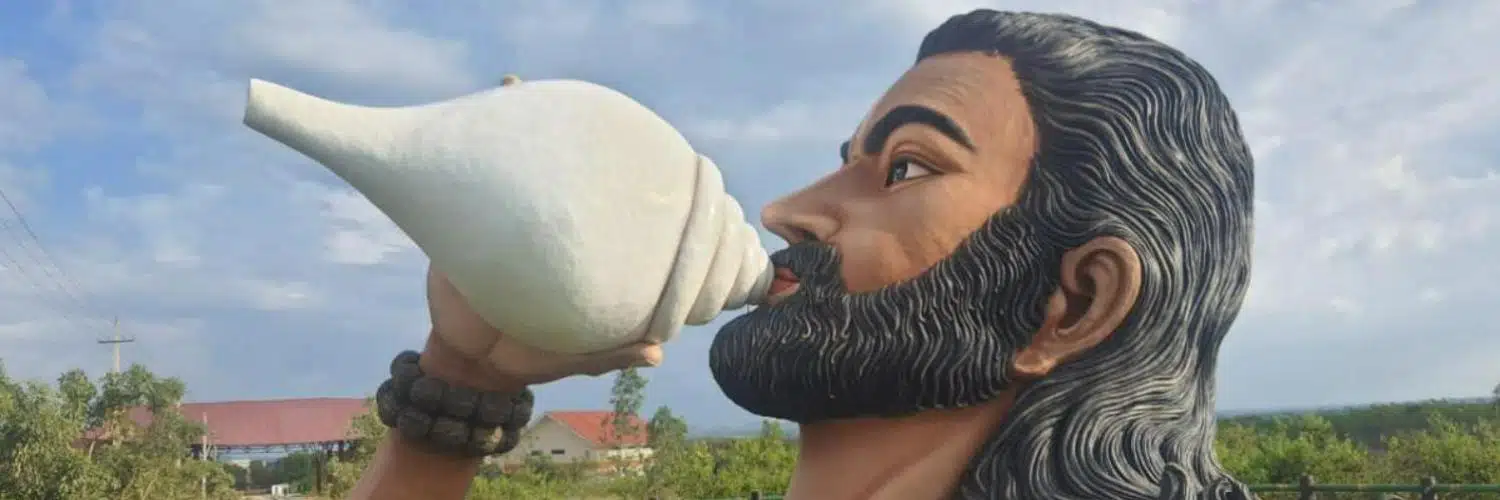
Kanaka dasa Life History
Kanaka Dasa – The Golden Voice of Devotion and Equality
In the heart of Karnataka’s Bhakti movement stands Kanaka Dasa, also known as Daasashreshta Kanakadasa — a philosopher, reformer, poet, and saint whose golden words continue to echo across centuries. Born in 1509, Kanaka Dasa’s life (1509–1609) became a shining example of faith, resilience, and the power of devotion expressed through music and poetry.
A disciple of Vyasaraja Swamiji and a contemporary of Purandara Dasa, he was one of the most celebrated figures of the Haridasa movement, which sought to spread spiritual wisdom and equality through simple Kannada compositions.
Early Life and Transformation
Kanaka Dasa was born as Thimmappa Nayaka in a Kuruba Gowda family in Baada village, near Bankapura in present-day Haveri district. His parents, Biregowda and Beechamma, belonged to a warrior clan, and young Thimmappa was trained in the ways of combat and leadership.
However, destiny had other plans. During a battle, he suffered a serious injury — one that nearly cost him his life. This near-death experience became a turning point. Abandoning his life as a warrior, he chose the path of spirituality, introspection, and music. It was his guru, Vyasaraja, who renamed him Kanaka Dasa — Kanaka meaning “gold,” symbolic of his pure devotion and radiant wisdom.
The Journey to Udupi – A Test of Faith
One of the most defining episodes in Kanaka Dasa’s life took place at Udupi, the sacred seat of Lord Krishna. Invited by his guru Vyasaraja Swamiji to visit the famous Sri Krishna Temple, Kanaka Dasa faced the harsh realities of caste prejudice.
At that time, entry to the temple was restricted to certain communities, and despite his saintly stature, Kanaka Dasa was denied entry. Undeterred, he set up camp outside the temple walls, dedicating his time to composing and singing keertanas in praise of Lord Krishna. His songs, filled with devotion and pain, questioned social discrimination and emphasized spiritual equality — “All beings are born of the same earth, drink the same water, and are warmed by the same sun.”
Then came the divine miracle that transformed Udupi forever. It is said that, moved by Kanaka Dasa’s sincere devotion, the idol of Lord Krishna turned westward, facing the saint, breaking through a small window in the temple wall. This window is revered today as the “Kanakana Kindi” (Kanaka’s Window) — a symbol of inclusion and divine grace.
While some scholars, like Prof. Sudhakara (Karnatak University) and Bannanje Govindacharya, interpret this story as a later legend, the moral it carries — of faith surpassing social boundaries — remains timeless.
Poet, Philosopher, and Reformer
Kanaka Dasa’s compositions reflect a deep understanding of human nature, morality, and the essence of devotion. He wrote in simple yet powerful Kannada, choosing familiar idioms and rhythms that resonated with common people.
Among his major works are:
-
Mohanatarangini – An epic likening Krishna’s life to the flowing river of devotion.
-
Nalacharitre – The story of Nala and Damayanti, blending philosophy with poetic grace.
-
Haribhaktisara – The core essence of devotion to Lord Vishnu.
-
Nrisimhastava – Verses in praise of Lord Narasimha.
-
Ramadhanyacharite – A socio-spiritual allegory using ragi (millet) and rice to represent social equality.
In each of these, Kanaka Dasa urged people to look beyond external rituals and embrace inner purity and righteous conduct. His writings stood boldly against hypocrisy, casteism, and blind orthodoxy — making him a true social reformer ahead of his time.
Legacy and Influence
Kanaka Dasa’s teachings and compositions remain an integral part of Carnatic music and Kannada literature. His keertanas are sung in homes, temples, and classical concerts alike, carrying forward his message of devotion and unity.
The annual celebration of Kanaka Dasa Jayanthi, observed across Karnataka, honours his contributions not just as a saint, but as a reformer who envisioned a more equal and compassionate society. The Kanakana Kindi in Udupi continues to remind devotees that true bhakti knows no boundaries.
Through his life, Kanaka Dasa proved that divinity responds not to birth or status, but to sincerity of heart and purity of devotion. His golden words still inspire those who seek to blend faith with equality, and music with meaning.
Conclusion
Kanaka Dasa’s life is a luminous example of how art, faith, and courage can challenge social norms and elevate human consciousness. His songs echo with timeless relevance — reminding us that devotion, when rooted in truth and compassion, can move even the divine itself.
Thank you, we have received your enquiry!
We have received your message and would like to thank you for writing to us. If your enquiry is urgent, please use the telephone number listed on this page, to talk to one of our staff members. Otherwise, we will reply by email shortly.
